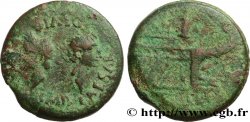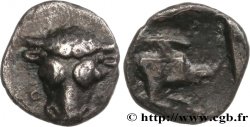Live auction - brm_930923 - LUGDUNUM - LYON - JULIUS CAESAR and OCTAVIAN Dupondius
You must signin and be an approved bidder to bid, LOGIN TO BID. Accounts are subject to approval and the approval process takes place within 48 hours. Do not wait until the day a sale closes to register. Clicking on "BID" constitutes acceptance of the terms of use of cgb.fr private live auctions.
Bids must be placed in whole Euro amounts only. The sale will start closing at the time stated on the item description; any bids received at the site after the closing time will not be executed. Transmission times may vary and bids could be rejected if you wait until the last second. For further information check the Live auction FAQ
All winning bids are subject to a 18% buyer’s fee.
All winning bids are subject to a 18% buyer’s fee.
| Estimate : | 500 € |
| Price : | 806 € |
| Maximum bid : | 966 € |
| End of the sale : | 20 August 2024 14:47:44 |
| bidders : | 8 bidders |
Type : Dupondius
Date: c. 36 AC.
Mint name / Town : Lyon
Metal : copper
Diameter : 32 mm
Orientation dies : 9 h.
Weight : 18,54 g.
Rarity : R2
Coments on the condition:
Monnaie idéalement centrée. Joli revers, bien venu à la frappe. Portraits agréables. Patine foncée
Catalogue references :
Obverse
Obverse legend : IMP./ CAESAR./ DIVI. IVLI./ DIVI. F..
Obverse description : Tête d'Octave nue à droite, adossée à la tête de César laurée à gauche ; entre deux, une palme.
Obverse translation : “Imperator/ Cæsar/ Divi Iuli/ Divi Filii”, (L’imperator/ césar/ divin Jules/ fils du divin).
Reverse
Reverse legend : COPIA.
Reverse description : Proue de navire à droite ornée d’un œil et d’un dauphin ; un astre au dessus.
Reverse translation : “Copia”, (Copia).
Commentary
De nombreux exemplaires furent coupés en deux pour servir comme as ou demi-dupondius ; si bien qu'il est très rare d'avoir un dupondius complet.








 Report a mistake
Report a mistake Print the page
Print the page Share my selection
Share my selection Ask a question
Ask a question Consign / sell
Consign / sell
 Full data
Full data










